Unit 6 Africa
1/13
Earn XP
Description and Tags
Name | Mastery | Learn | Test | Matching | Spaced |
|---|
No study sessions yet.
14 Terms
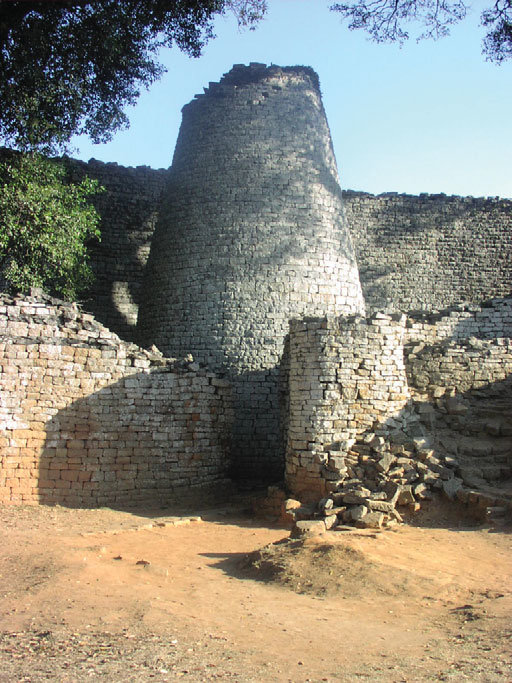
Conical Tower and Circular Wall of Great Zimbabwe
Date of Creation: 1000-14000 c.e.
Culture/Artist:Shona peoples
Location:Southeastern Zimbabwe
Movement:African art
Media:Coursed granite rocks
Function:Place of government for kings; separated royalty from commonfolk; location for long distance trade, spotting enemies

The Great Mosque of Djenne
Date of Creation: 1200 c.e.; rebuilt from 1834-1836, then again from 1906-1907
Culture/Artist: Malian
Location: Floodplain of the Bani river in Djenne, Mali
Movement: African art
Media: Adobe mud brick
Function: place of worship; political + cultural & Economic center
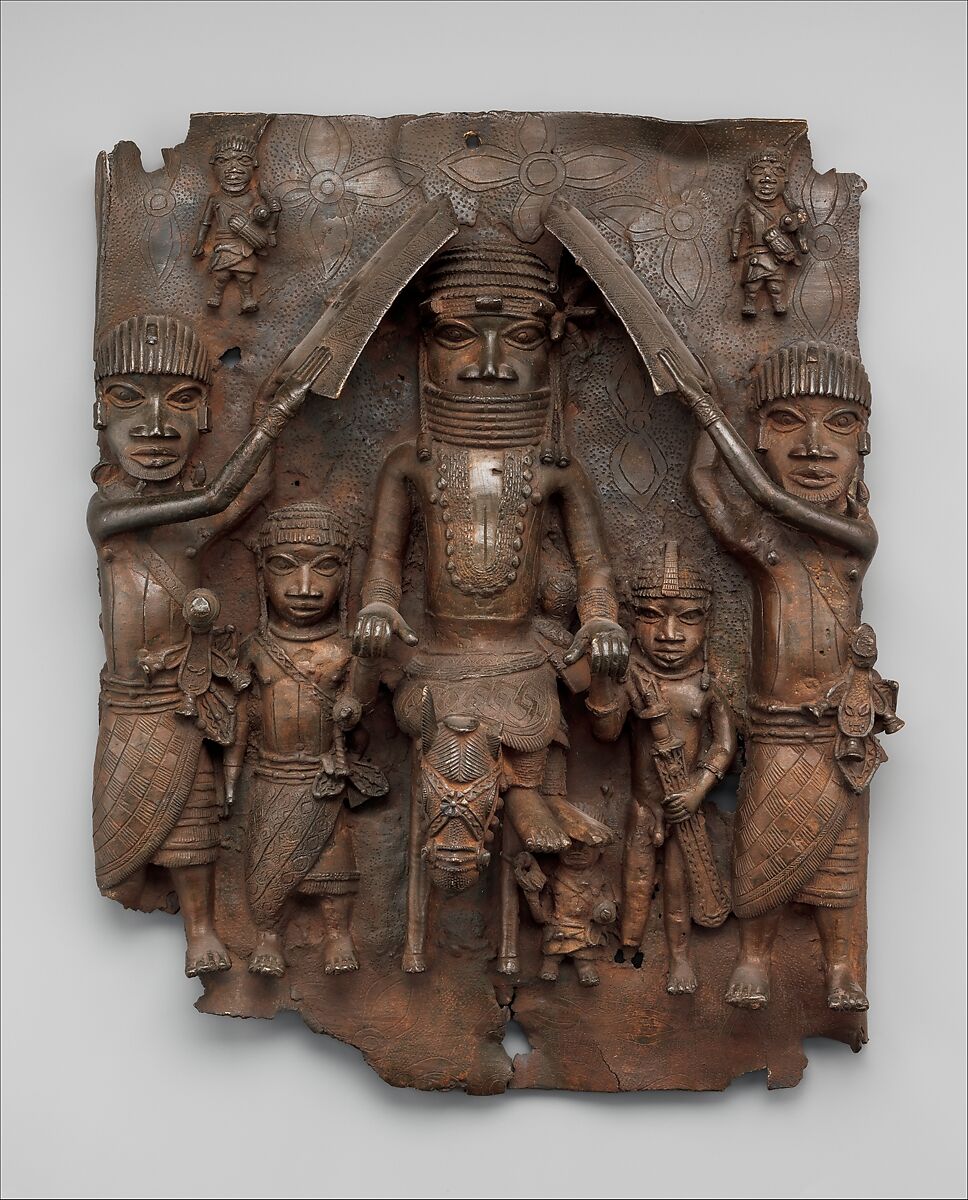
Wall Plaque from Oba’s Palace
Date of Creation: 16th century ce
Culture/Artist: Edo Peoples
Og Location: Kingdom of Benin (Nigeria)
Movement: African Art
Media: Cast Brass (The work was created by using the lost-wax technique. Lost-wax casting is a traditional Benin art form that can be identified by the fine detail in the work as well as its hollow form)
Function: The plaques show court rituals that occured in the palace, in the order it occured in. It shows the history of the kingdom and expresses royal power and also demonstrates British Imperialism during the scramble of the European powers taking over Africa.
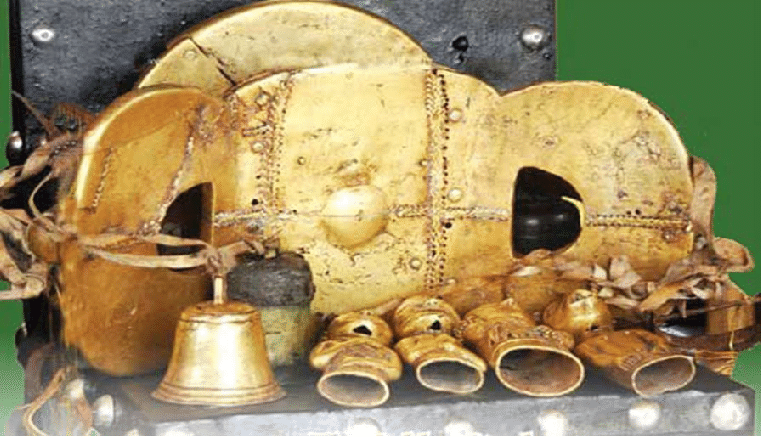
Sika dwa kofi (Golden Stool)
Date of Creation: 1700 ce
Culture/Artist: Ashanti People
Location: south central Ghana or Kumasi Ghana
Movement: African Art
Media: Gold over wood and cast-gold attachments
Function: This stool is the divine throne of the Ashanti People. The stool is used in celebrations and processions Believed to embody the spirit of the Nation. Bells on this stool warn the king of danger

Ndop (portrait figure) of King Mishe miShyaang maMbul
Date of Creation: 1760-1780 ce
Culture/Artist:Kuba peoples (Democratic Republic of the Congo)
Location: Democratic Republic of the Congo
Movement: Arts of africa
Media: Wood
Patron: Kuba King Mishe miShyaang maMbul
Function: recorded his reign for posterity and solidified his accomplishments
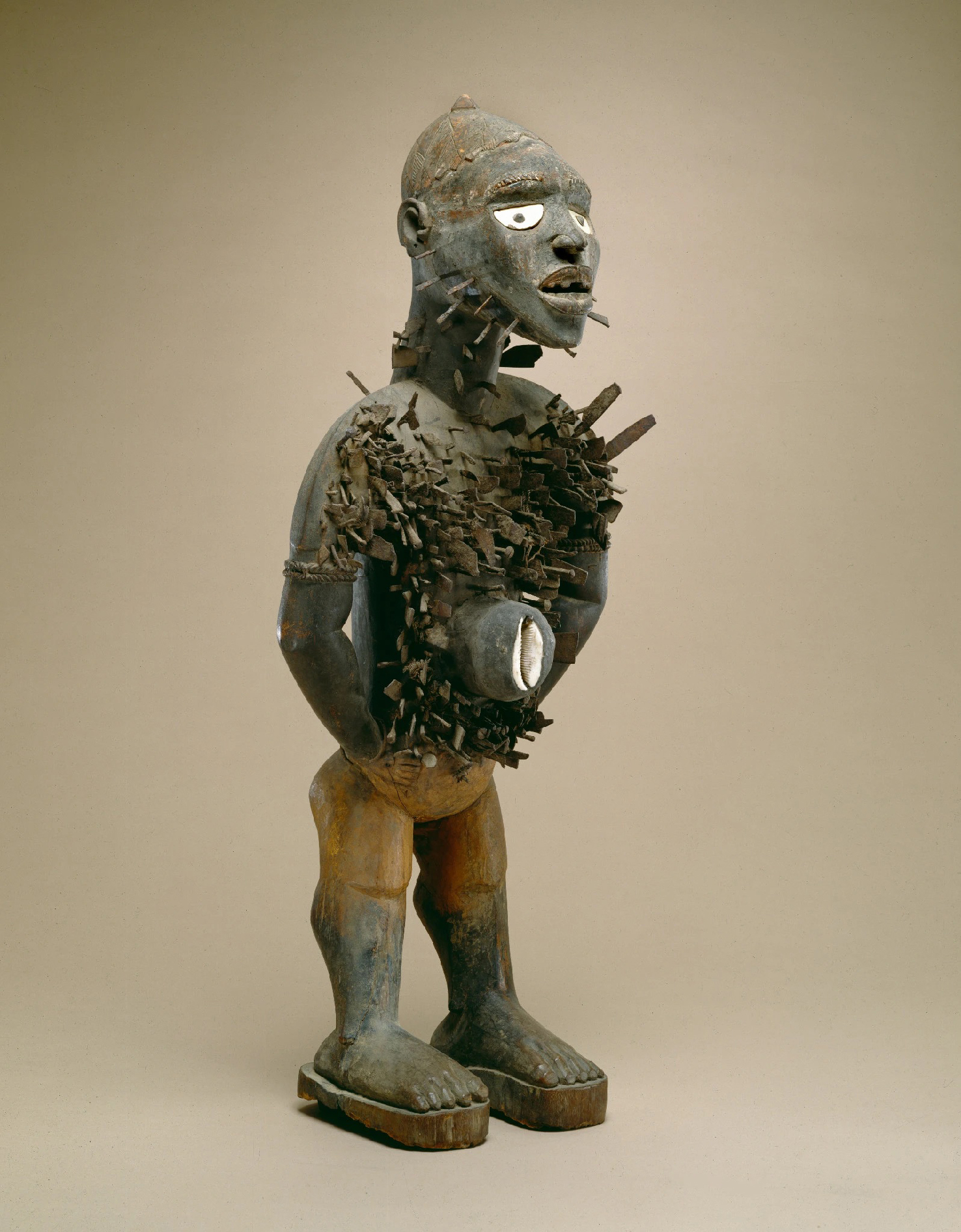
Power figure (Nkisi n’kondi )
Date of Creation: late 19th century
Culture/Artist:Kongo peoples
Location:Democratic Republic of the Congo
Movement: Arts of africa
Media: Wood and metal
Function: Part of tradition: Serve as reminders of social obligations and enforces good behavior; healing and protection; aimed at ‘curing’ physical, social or spiritual ailments.
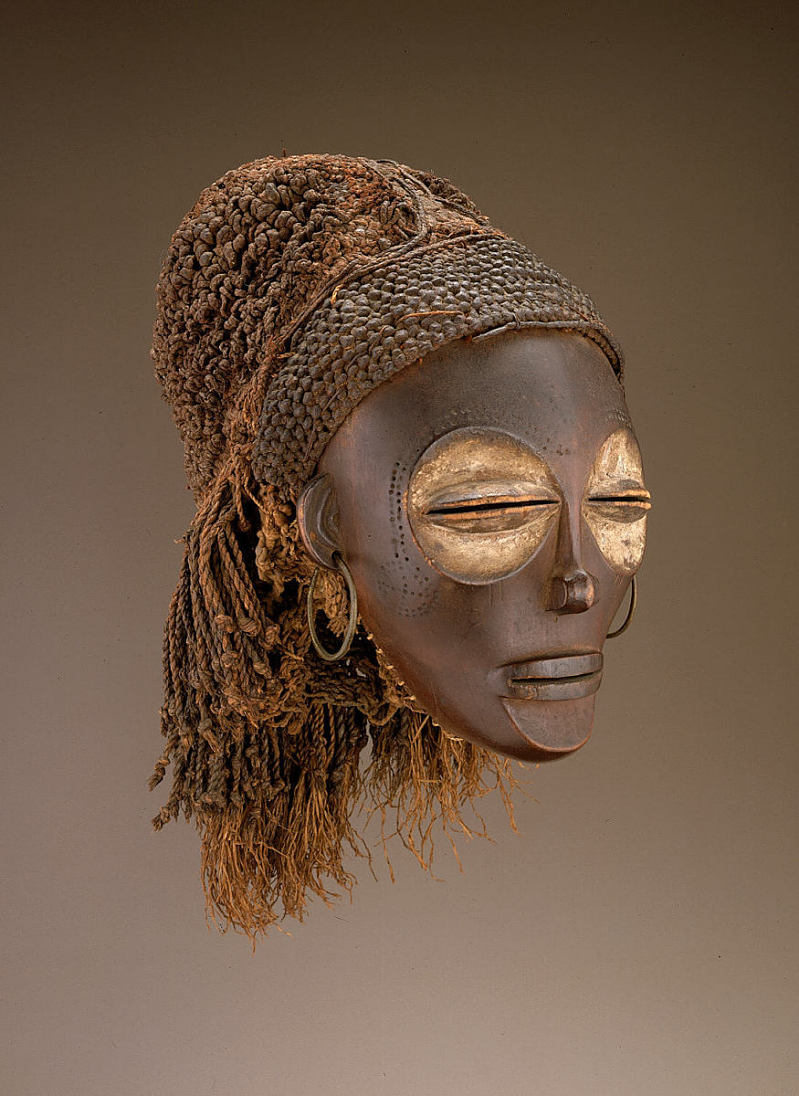
Female (Pwo) Mask
Date of Creation: late 19th to early 20th century
Culture/Artist: Chokwe peoples, made by a man
Location: Democratic Republic of the Congo
Movement: Indigenous African Art
Media: wood, fiber, pigment and metal
Function: Used by male dancers to honor Pwo, a female deity who represents fertility and was also the founding mother of the Chokwe lineage.

Portrait Mask (mbilo)
Date of Creation: Early 20th century
Culture/Artist: Baule Peoples
Artist: Owie Kamou
Location: Côte D'ivoire
Media: Wood and Pigment
Function: Honoring matriarch of the family, also honoring ancestors. Part of a masquerade, called gbagba, was intended to entertain and offer social relief at the end of a long day of chores.
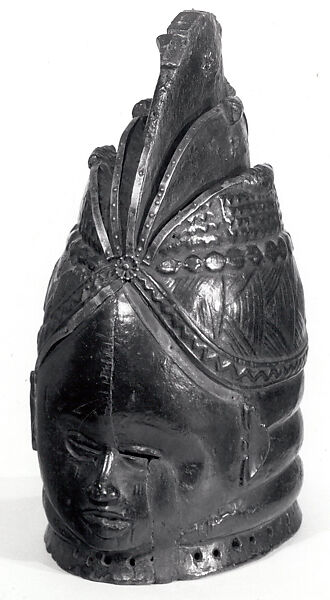
Bundu Mask
Date of Creation: 19th-20th century
Culture/Artist: Sande Society, Mende Peoples
Location: West African forests of Sierra Leone and Liberia
Movement: West African Art
Media: Wood, Cloth, And Fiber
Function: Initiation rite for young girls turning into womanhood. Was worn by women
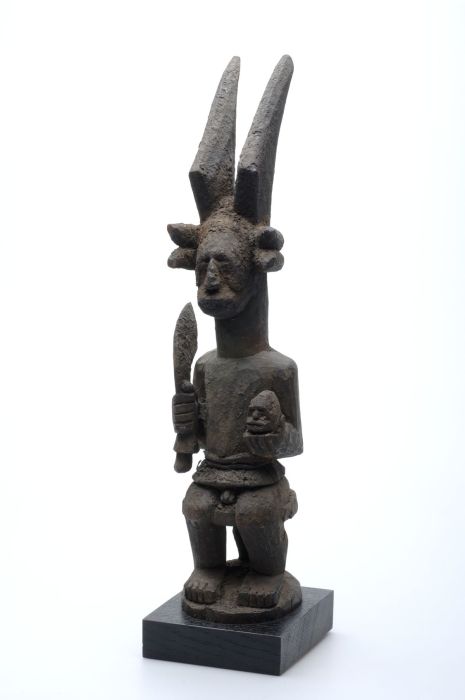
Ikenga (shrine figure)
Date of Creation:19th to 20th century ce
Culture:Igbo peoples
Location: Nigeria
Media: wood
Function: Celebrates the Igbos belief in the importance of individual achievement
A source of strength and power for the owner, held the spirit (Chi) of the owner. Kept in a personal Shrine at home, Emphasize the power of the right hand.
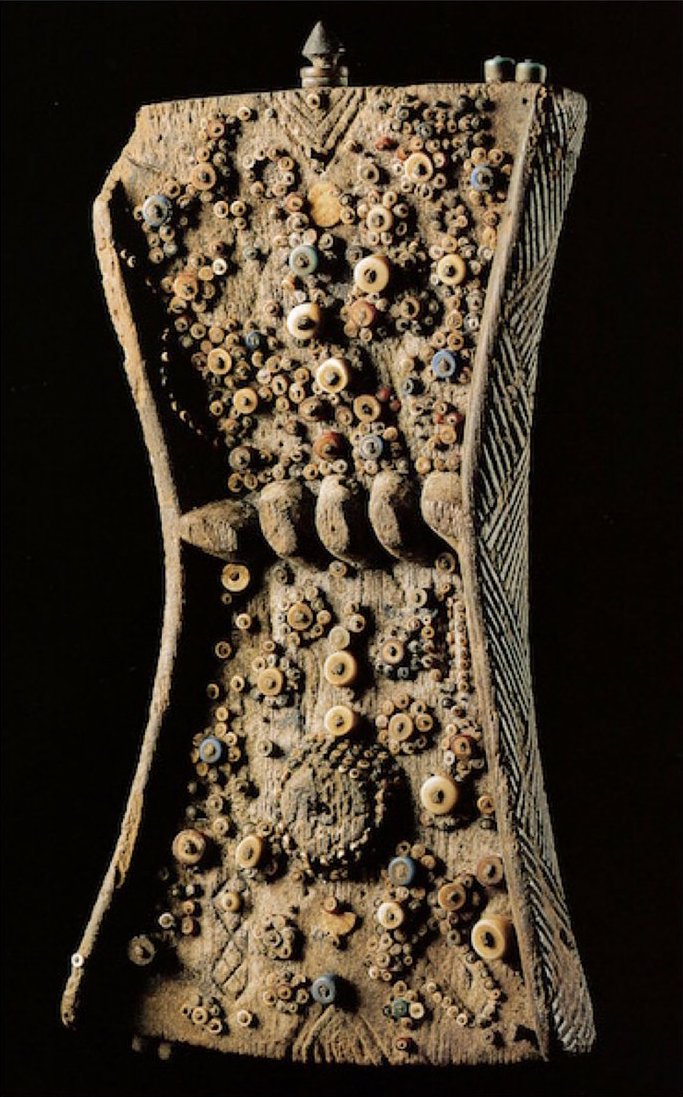
Lukasa (Memory board)
Date of Creation:19th to 20th century ce
Culture/Artist: Mbudye Society, Luba peoples
Location:Democratic Republic of the Congo)
Media:Wood, beads, and metal
Function: Used as a way to record and remember important times and events in the Luba People’s society

Aka elephant mask
Date of Creation: 19th to 20th century c
Culture/Artist: Bamileke Peoples
Location: Cameroon, western grassfields region, Africa
Media: Wood, woven raffia, cloth, and beads
Function: meant to be used in performance-Purpose to honor the king and bring social harmony and political stability. Was worn by Bamileke who were titleholders, warriors, and court officials.

Reliquary figure (byeri)
Date of Creation: 19th to 20th century ce
Culture/Artist: Fang peoples
Location: southern Cameroon, Equatorial Guinea
Media: Wood
Function: Guard family reliquary boxes from the “forbidden gaze of women and uninitiated boys” & evil spirits, talisman (an object with supernatural properties that protects from evil and brings good luck), Sometimes were consulted when considering an important decision, Sometimes used as puppets to teach their ancestral history to young men of the society, Express certain spiritual ideas (not naturalistic)
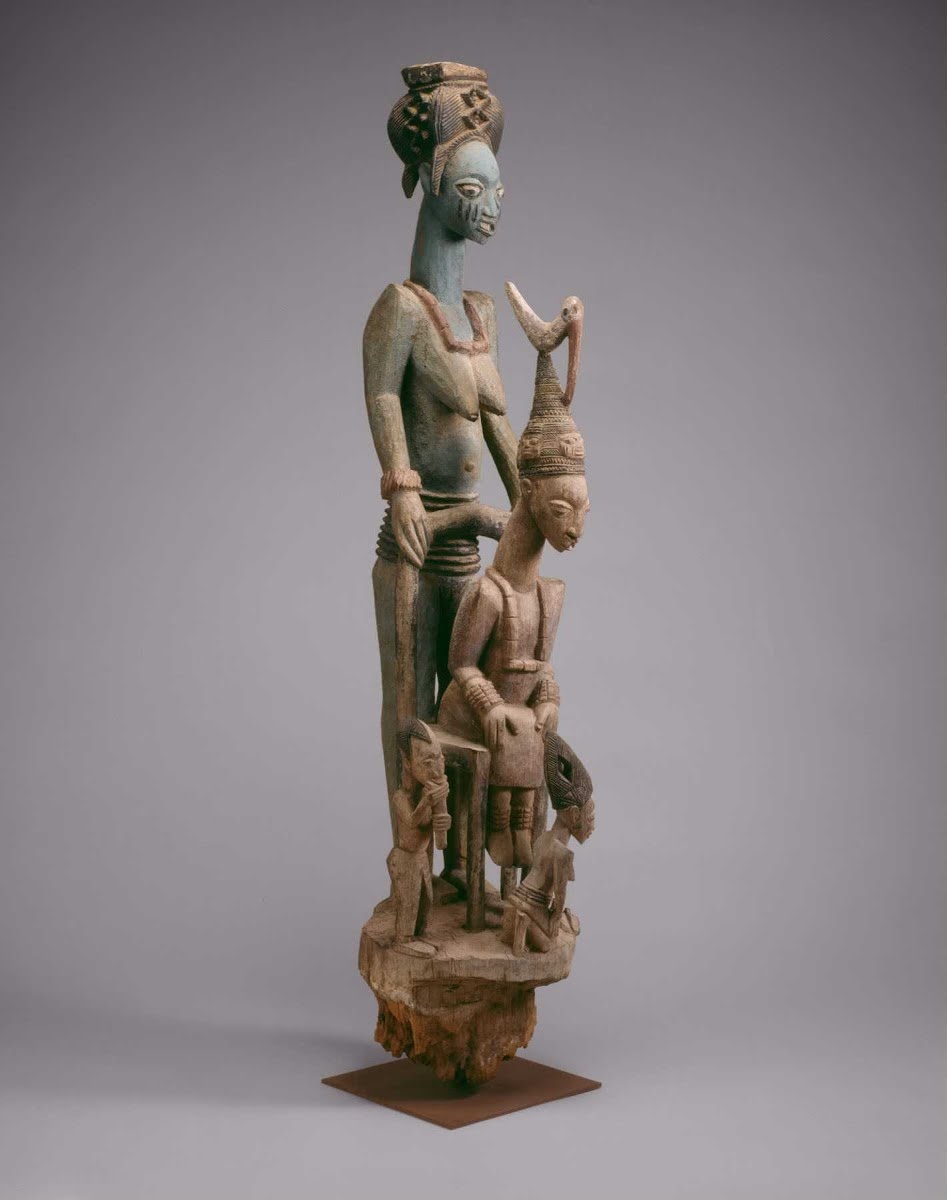
Veranda post of enthroned king and wife
Date of Creation: 1910-1914 CE
Culture: Yoruba peoples
Artist: Olowe of Ise
Location: Ikere, Nigeria
Movement: African art
Media: wood and pigment
Patron: by the yoruba ruler
Function: As part of a set of 4 posts used to hold up the porch of the Palace, also depict the king’s grandeur while humbling him